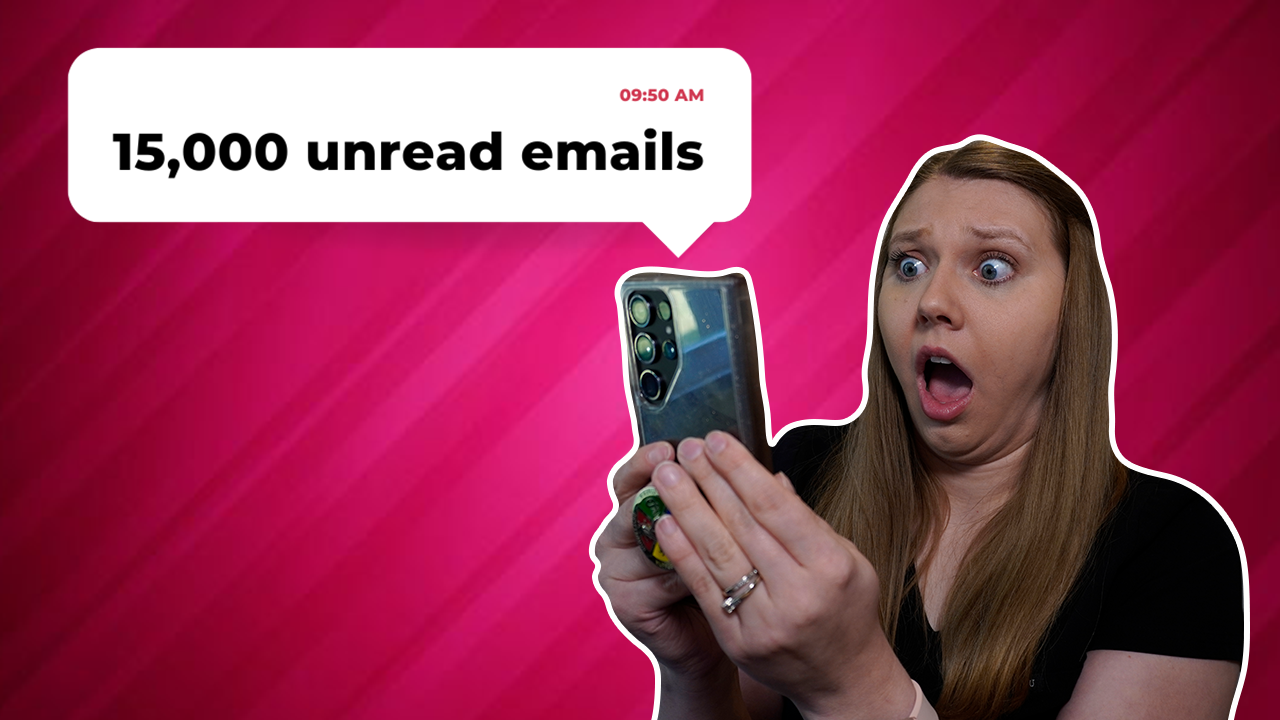Stop Email Overwhelm: My Strategy for Tackling Your Email Inbox as a Busy Pharmacist
Inbox overwhelm is a real thing. If you have ever stared at your inbox hoping all the emails would magically disappear, you understand what I'm talking about. I’ve been there. That’s why I wanted to share how I manage the 15,000 emails that come through my inbox each month as an investigational drug service pharmacist, as well as my organizational strategies to keep everything straight.
Step 1: Create Email Folders
As a recent pharmacy school graduate entering the world of pharmacy, one of the first steps to mastering your inbox is to create well-organized email folders. Think of these folders as your virtual filing cabinets. Here's how to get started:
Primary Folders: Start by creating primary folders for key categories such as "Job Applications," "Important Updates," "Networking," and "Continuing Education." This will help you categorize your emails effectively.
Subfolders: Within each primary folder, create subfolders for specific topics or companies. For example, under "Job Applications," you can have subfolders for different job positions or potential employers. This level of granularity will make it easier to find specific emails later on.
Rules and Filters: Most email platforms allow you to set up rules and filters that automatically route incoming emails to specific folders based on criteria like sender, subject, or keywords. Take advantage of this feature to streamline your inbox further.
Step 2: Quick Scan of Inbox
Now that your folders are in place, it's time for a quick scan of your inbox. This step is crucial to stay on top of incoming messages and prevent them from piling up. Here's how to do it effectively:
Set Daily or Weekly Time Blocks: Allocate specific time blocks in your schedule for email management. During these times, dedicate your full attention to your inbox.
Sort by Priority: Start by identifying high-priority emails that require immediate attention. These could be job offers, interview invitations, or critical updates from your school or licensing boards.
Delete Unnecessary Emails: Don't be afraid to delete emails that are irrelevant or no longer serve a purpose. Clearing out the clutter will make your inbox more manageable.
Step 3: Respond to Flagged Emails and Add Action Items to Your To-Do List
Once you've completed your quick scan, it's time to dive into the details. Here's how to handle flagged emails and action items effectively:
Flag Important Emails: Use the flagging or marking feature to highlight emails that require a response or further action. This will serve as a visual cue for your next steps.
Set Up an Action List: Create a dedicated to-do list or task manager where you can jot down action items from your emails. This will help you prioritize and ensure you don't forget important tasks.
Respond Promptly: Aim to respond to critical emails within 24-48 hours. This demonstrates professionalism and keeps your inbox from becoming a backlog of unanswered messages.
Step 4: Schedule Time to Maintain Your Inbox
Lastly, to maintain inbox control, it's essential to schedule regular maintenance sessions:
Daily Check-Ins: Allocate a few minutes at the beginning or end of your workday to check and respond to emails. This prevents your inbox from spiraling out of control.
Weekly Cleanup: Set aside a dedicated time each week to review and clean out your inbox. Archive or move emails that no longer require immediate attention.
Adjust and Adapt: Periodically review your email management system and adjust it as needed. As your career evolves, your inbox's needs may change.
Managing your inbox effectively is a skill that every recent pharmacy school graduate should master. By following these steps – creating folders, conducting quick scans, responding to flagged emails, and scheduling inbox maintenance – you can keep your email communications organized, reduce stress, and stay on top of job opportunities and important updates in the pharmacy profession. Remember, a well-organized inbox is a key ingredient in your journey to a happier and less burnout-prone pharmacist life.
Watch or listen on your favorite podcasting platform:




